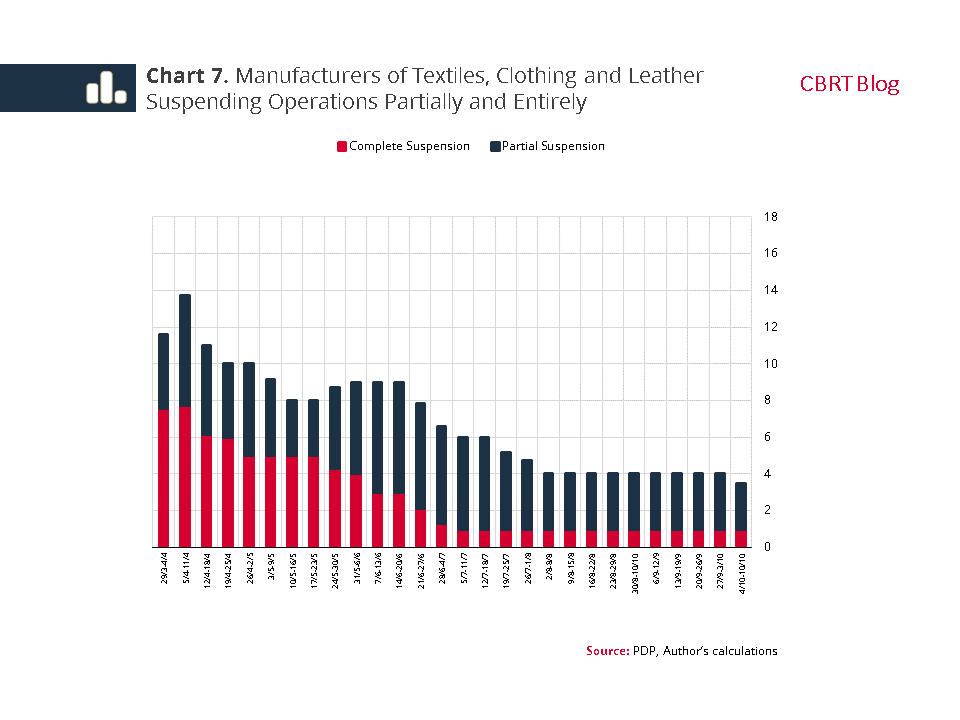The novel coronavirus that broke out in China in the last days of 2019 and quickly turned into a pandemic has kept Turkey in its grip since the first case was recorded on 11 March 2020. It is of great importance for policy makers to understand and determine the economic effects of the pandemic, which have caused significant deterioration in supply and demand balances due to rapid and comprehensive measures taken to protect public health. Although the negative impact of a coronavirus pandemic on economic activity can be predicted from the very beginning, its implications at the micro level are less predictable. For this reason, new high-frequency, timely and micro-level data sources are needed to better analyze the economic impact of the pandemic.
In response to this external shock, unprecedented in both scale and speed, governments as well as companies had to take quick and important decisions, be it out of caution or necessity. To monitor companies’ pandemic-related business decisions in real time, the Public Disclosure Platform (PDP) notifications were used. The PDP is an electronic system through which notifications to be disclosed to the public are announced, and companies listed on Borsa Istanbul (BIST) have the obligation to share their financial reports and material disclosures with the public on this platform. A detailed information set was created by monitoring companies’ pandemic-related business decisions on a daily basis with key words such as "Corona", "COVID-19", and "pandemic" in the PDP Material Disclosures notifications. Using the dataset created, this blog post gives a summary of the pandemic-related decisions taken by manufacturing industry companies traded on the BIST and presents the findings about how the pandemic has affected sectors.
Since fluctuations in the activities of large-scale and industry-leading BIST companies may cause fluctuations in the entire economy through strong backward and forward linkages in supply chains, their activities are expected to be a good indicator for all economic activity. In fact, Chart 1 confirms this presumption. Activities of the manufacturing companies on the BIST, which have a relatively large weight in the economy though they are few in number, and economic cycles move quite closely (Chart 1).
As a result, how the manufacturing companies on the BIST react to the pandemic will play a major role in total production, employment and export cycles.
Scanning PDP notifications published between 13 March and 9 October 2020 brought up 386 notifications by 114 companies regarding the pandemic. The weekly distribution of these notifications shows that companies reported their pandemic-related responses and decisions mainly between 15 March and 18 April (Chart 2). Examined by subjects, notifications were first made to announce pandemic-driven changes to working models and production activities. However, with the Economic Stability Shield stimulus package, announced on 18 March 2020, the number of notifications regarding applications for short-term work allowance increased as the assistance would cover the coronavirus (Chart 3).
To show the divergence of business decisions taken against the pandemic across sectors, the number of companies that halted production and benefited from short-term work allowance and their shares in the sector are presented in the charts below. The pandemic seems to have had a minimal negative impact on production in sectors such as food, packaging and cement. In these sectors, while production continues at its normal level, the use of the short-term work allowance mostly covers office work that switched to a remote working model in order to protect public health. Companies operating in base metals and chemicals industries decided to continue with production at low capacity, rather than halting it entirely (Charts 4 and 5).
Industries that halted production and applied for short-term work allowance the most were textiles, clothing and leather as well as road vehicle-related metal goods, machinery, electrical devices and transportation equipment (Charts 4 and 5). Supply, sales and delivery processes, which were disrupted by global coronavirus measures, caused a short-term interruption to the production of road vehicles and parts (Chart 6). Notifications show that these sectors halted production entirely between the week of 29 March and the week of 10 May. The negative impact of the pandemic lasted longer for the textiles, clothing and leather industry where production activities were stalled due to insufficient domestic and international demand (Chart 7).

How microeconomic actors, such as households and firms, behave and respond to economic shocks can vary considerably. For this reason, it is now known that macro data and analyses alone are not enough to tell the entire story. Based on a method developed to monitor in a timely and comprehensive manner the impact of the coronavirus pandemic on the behavior of large companies traded on the stock exchange, this study once again highlights the benefits of a micro-level approach.